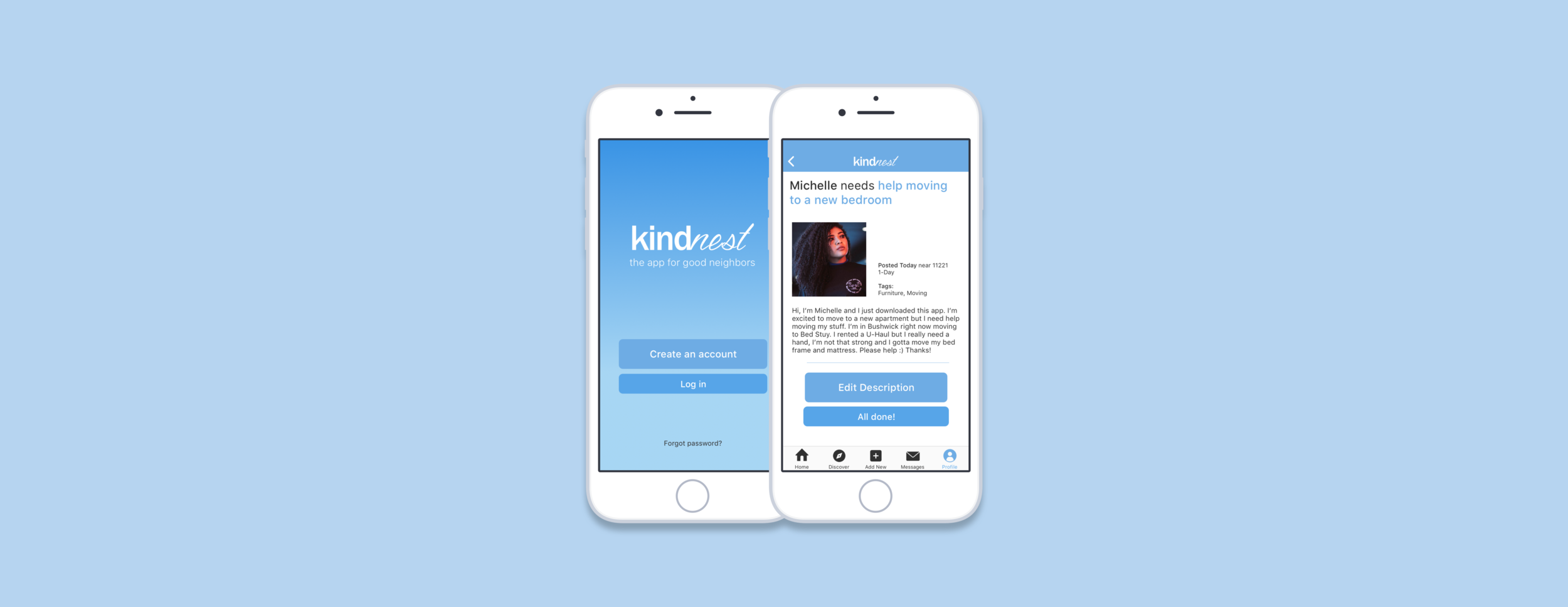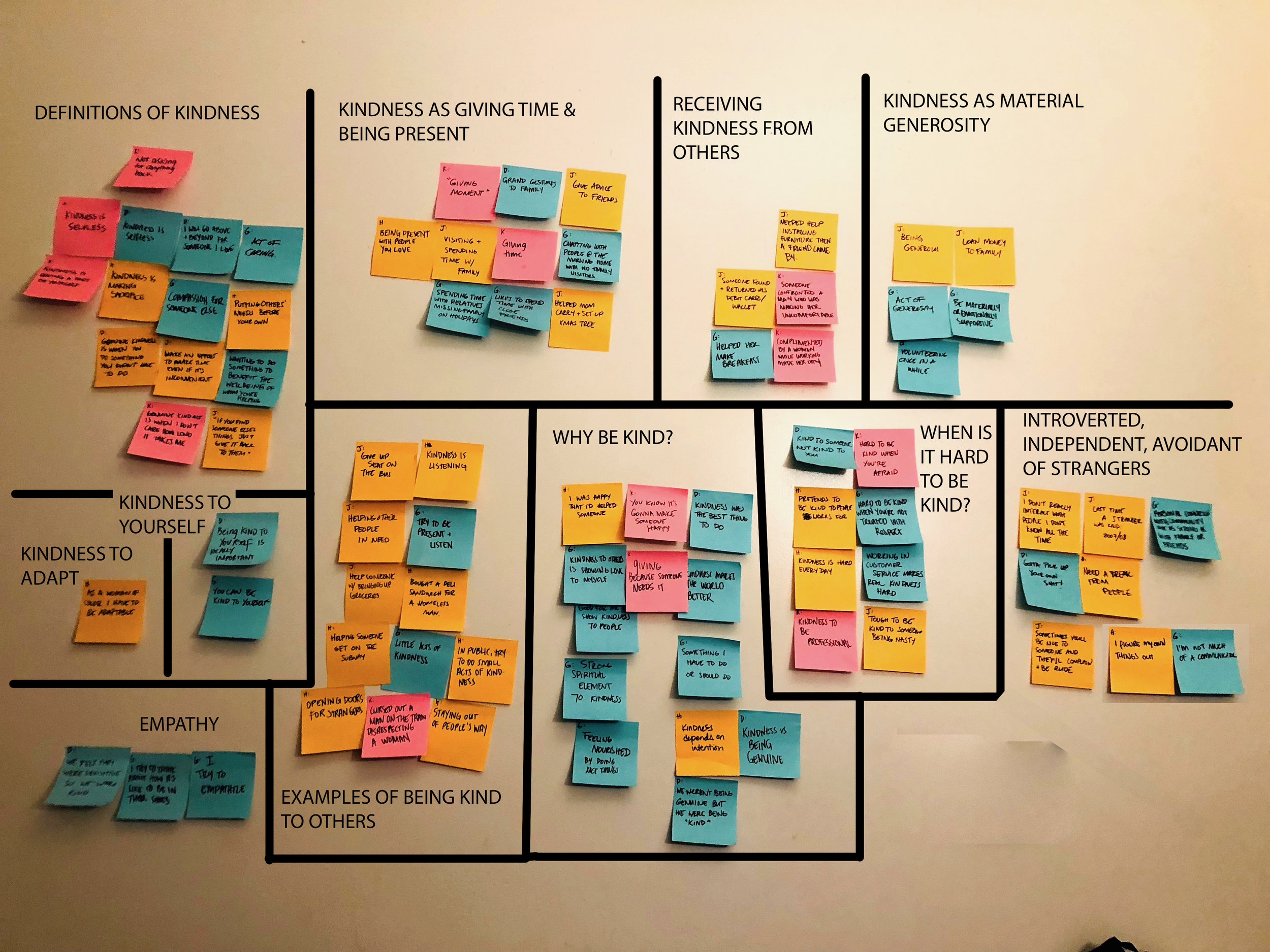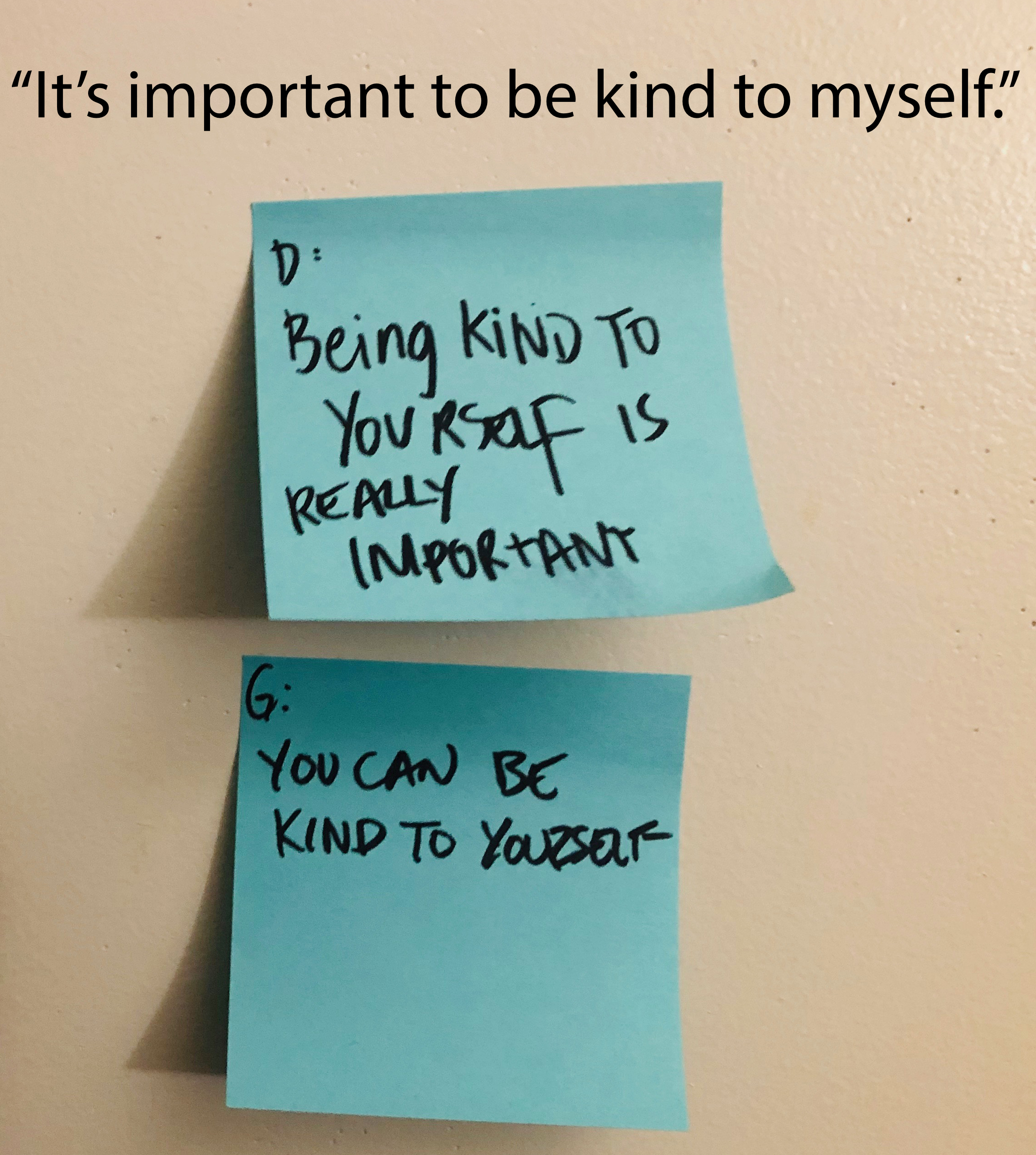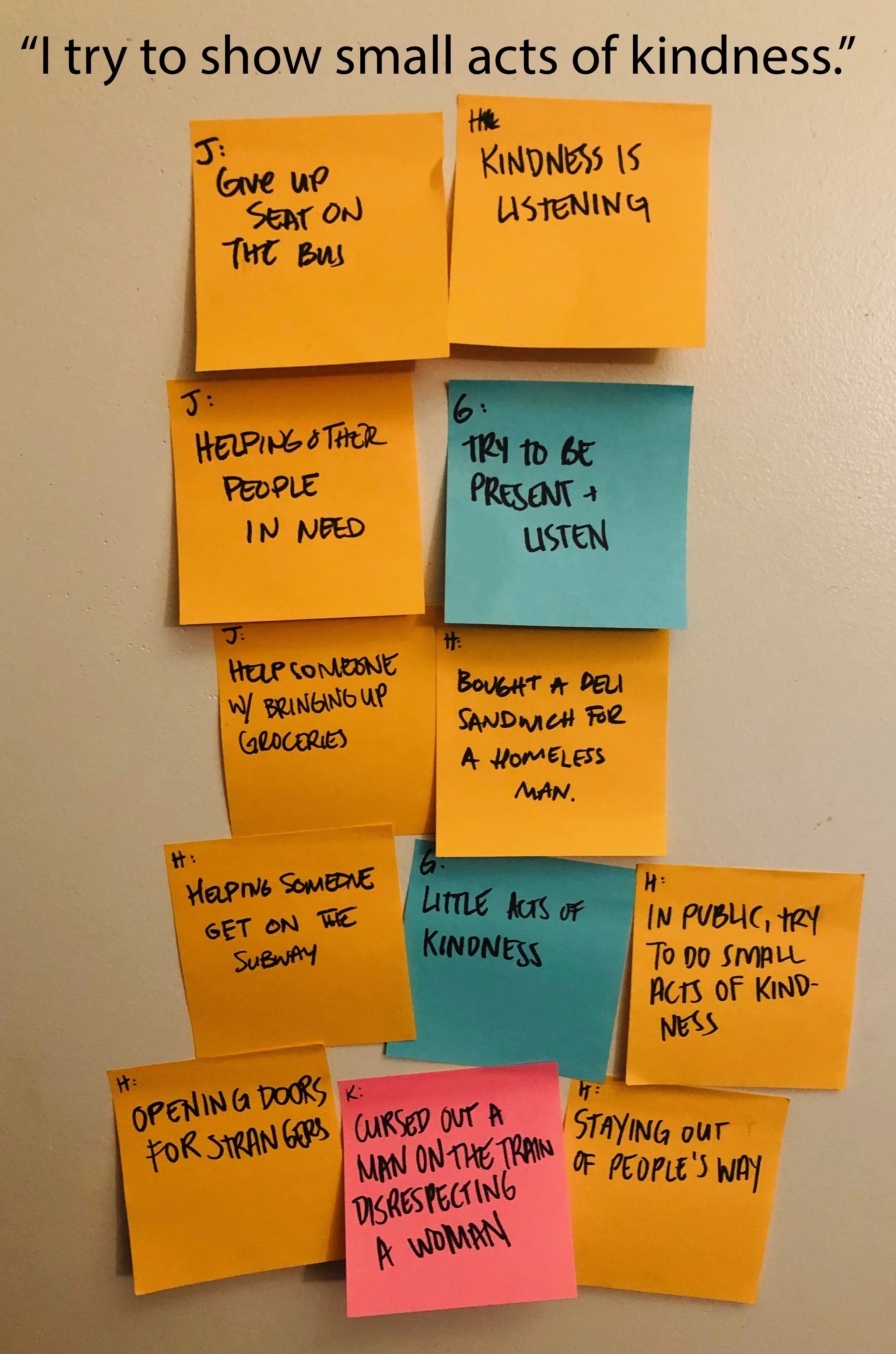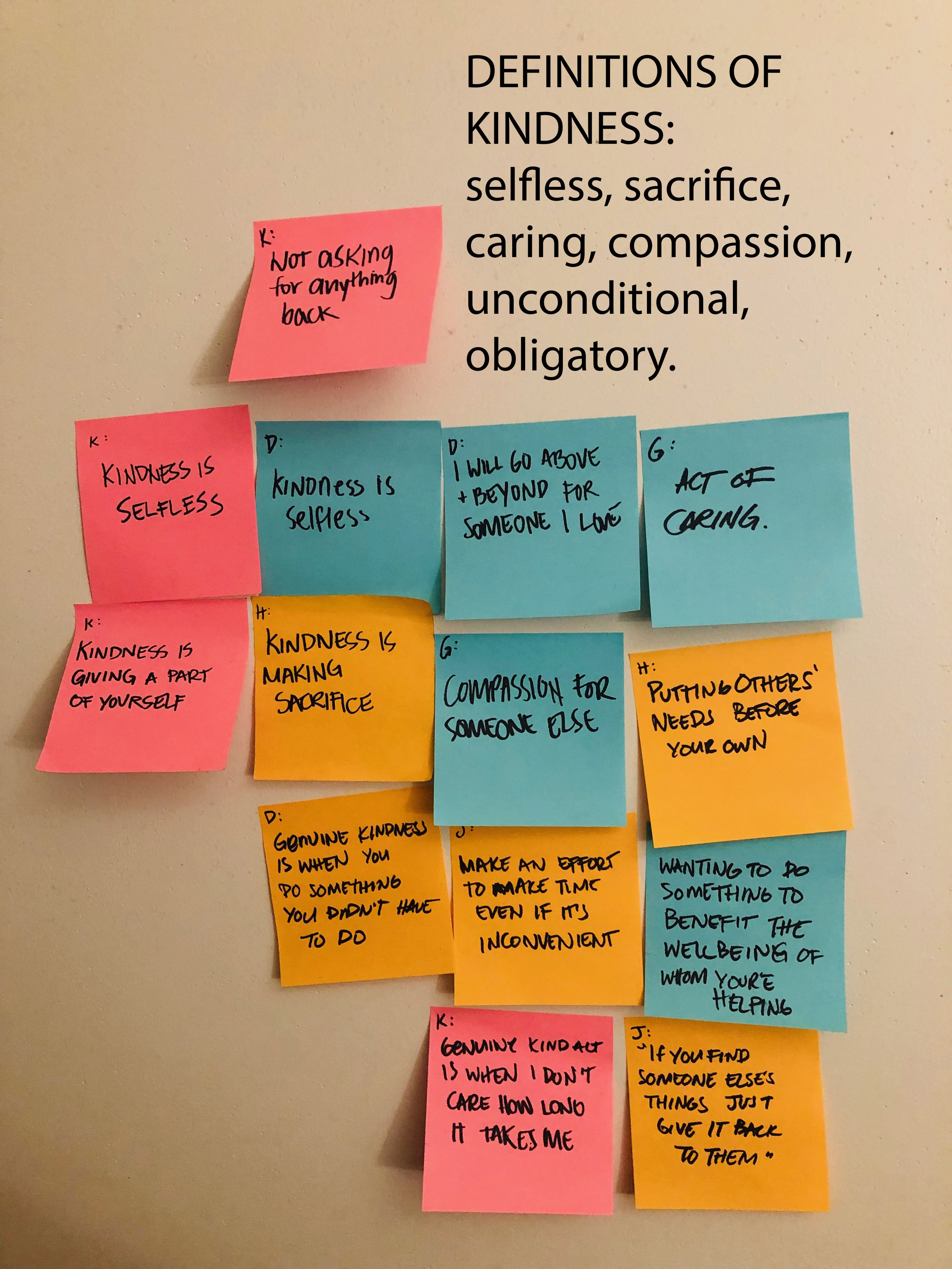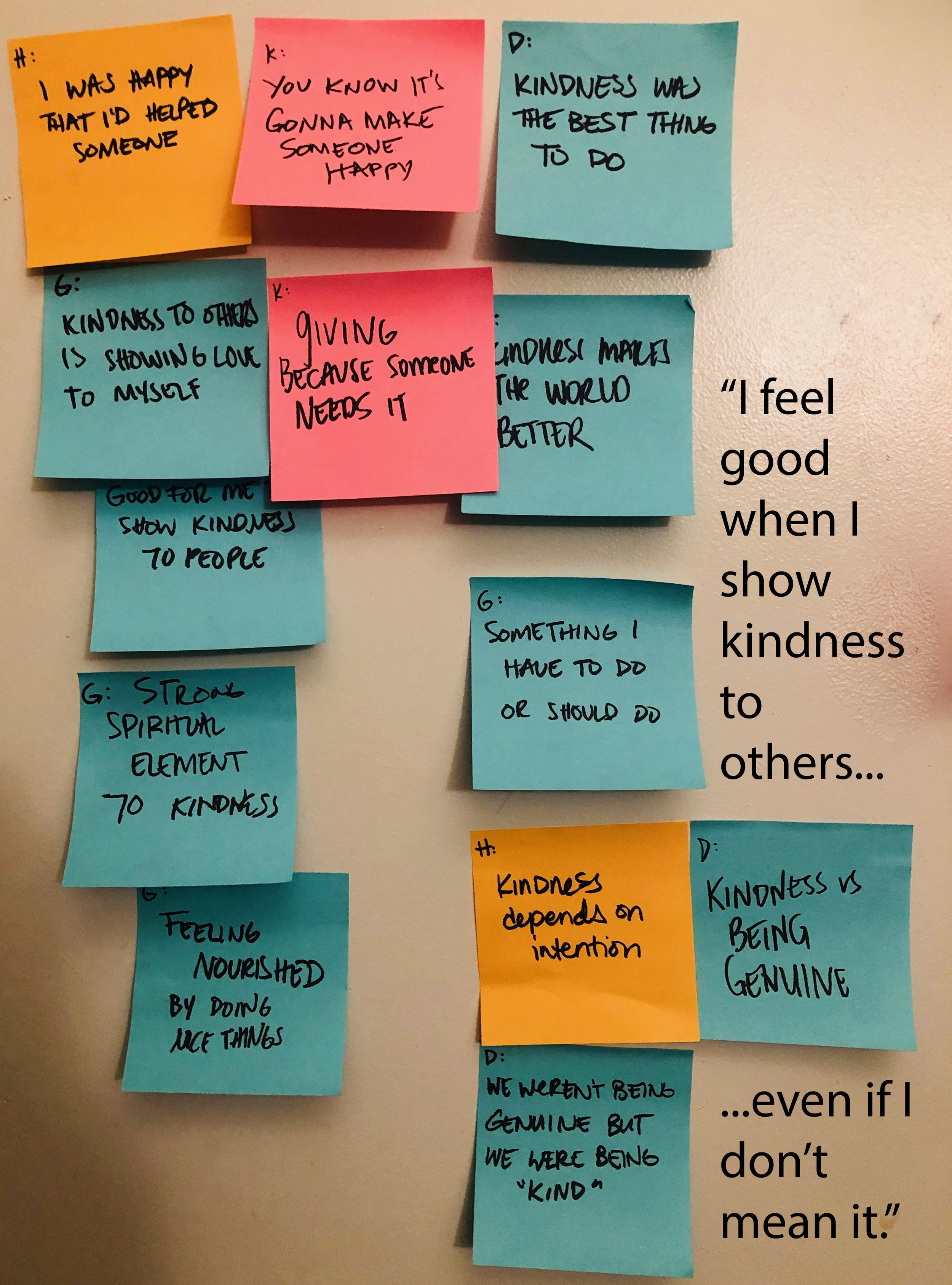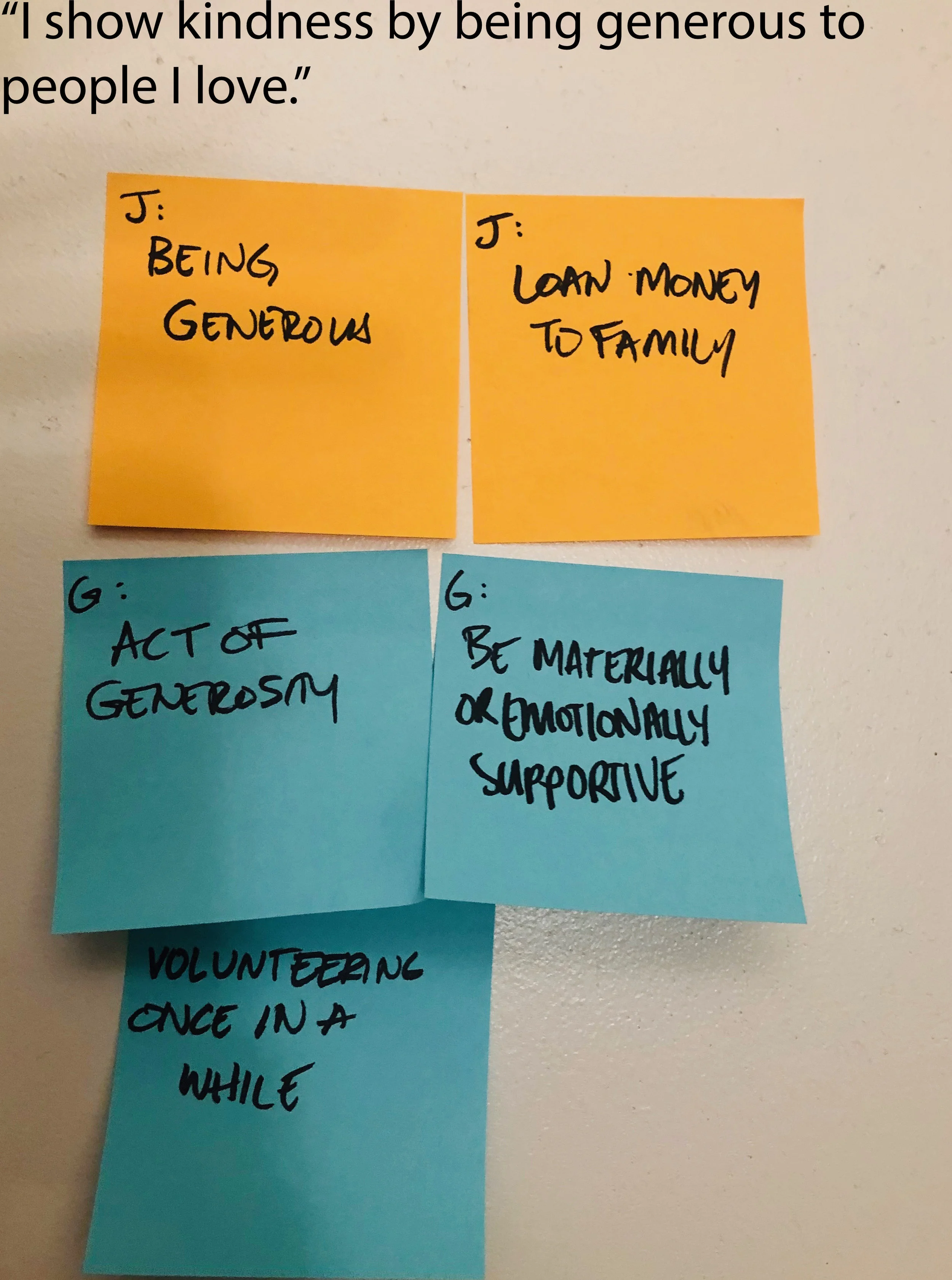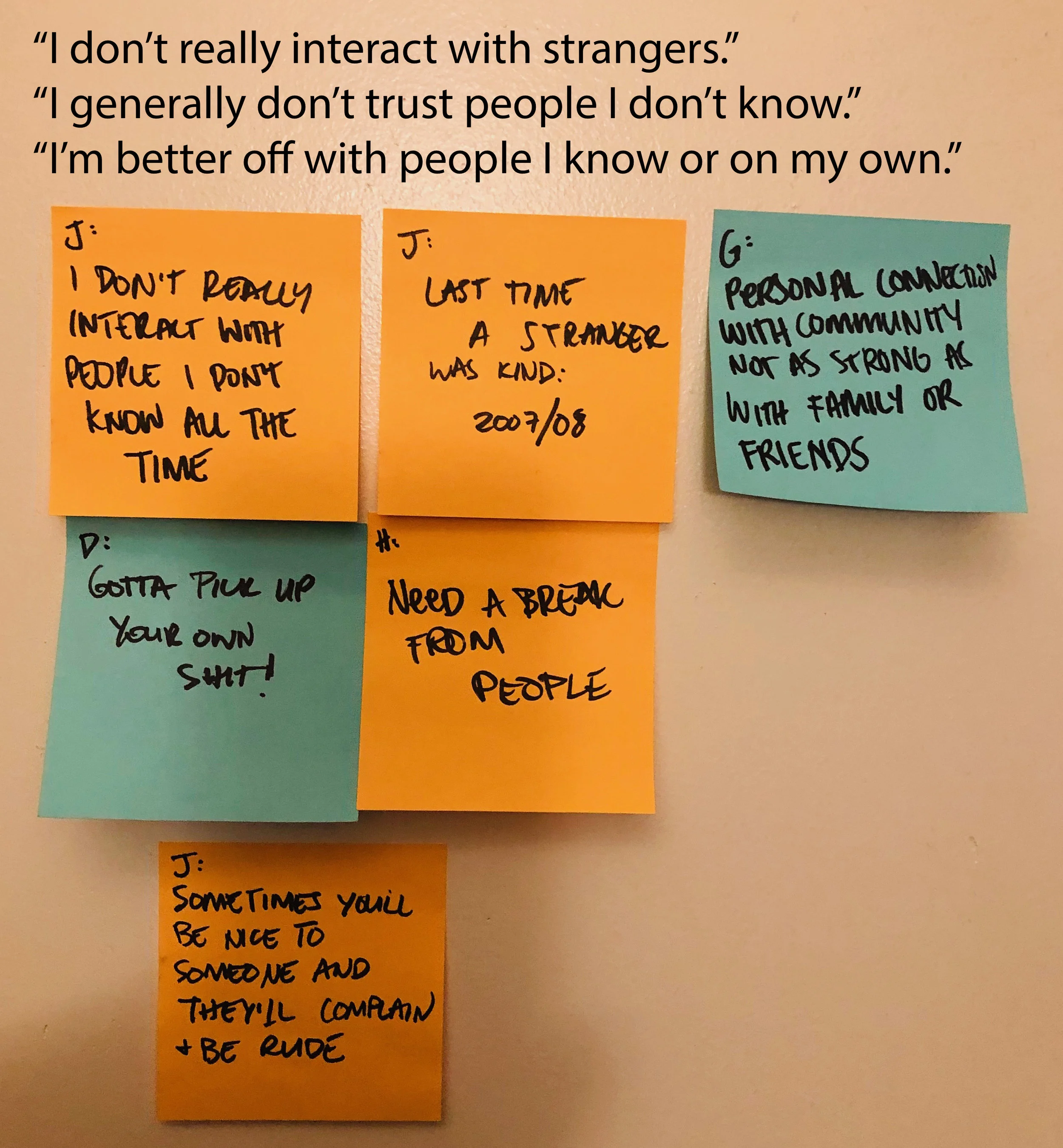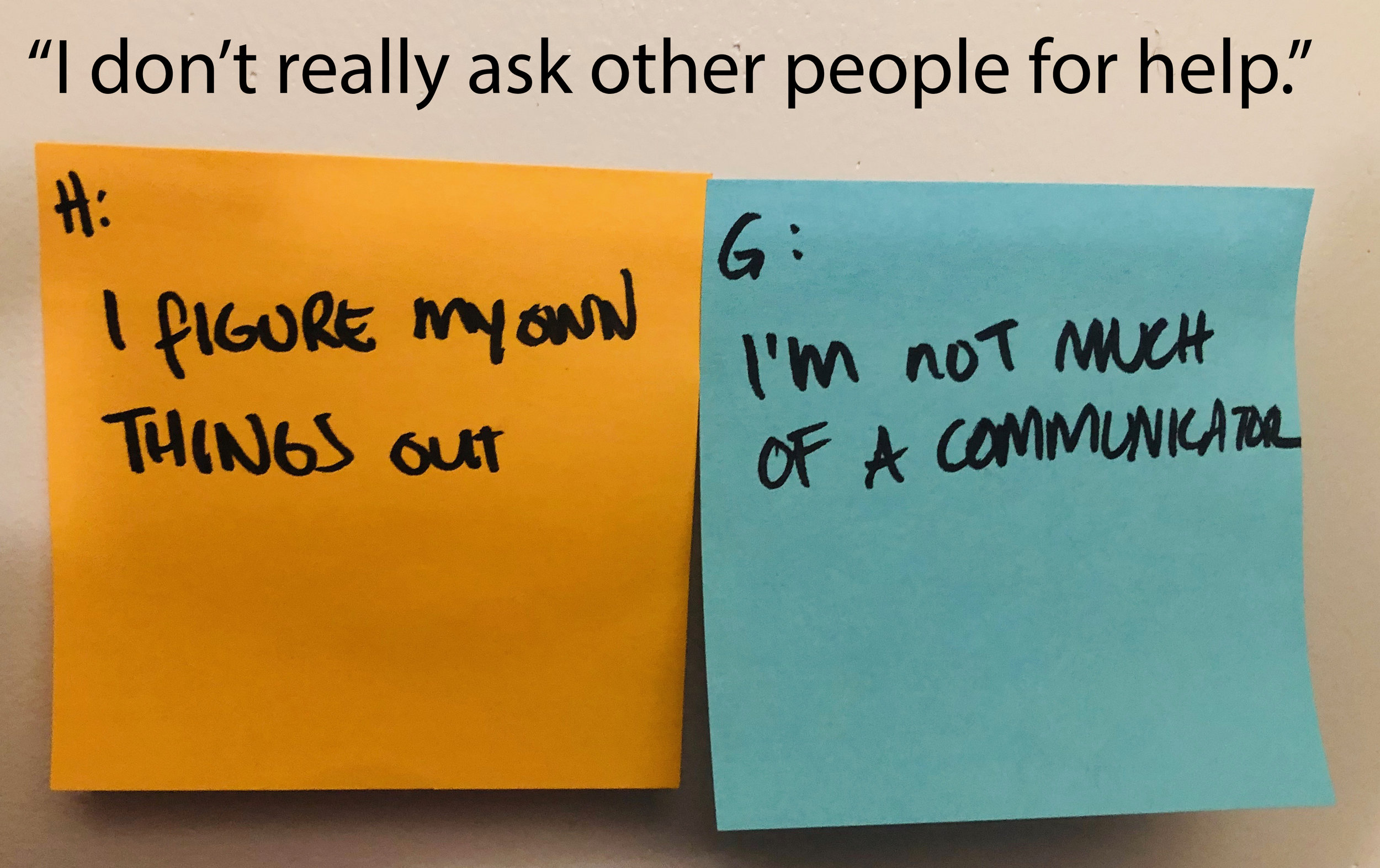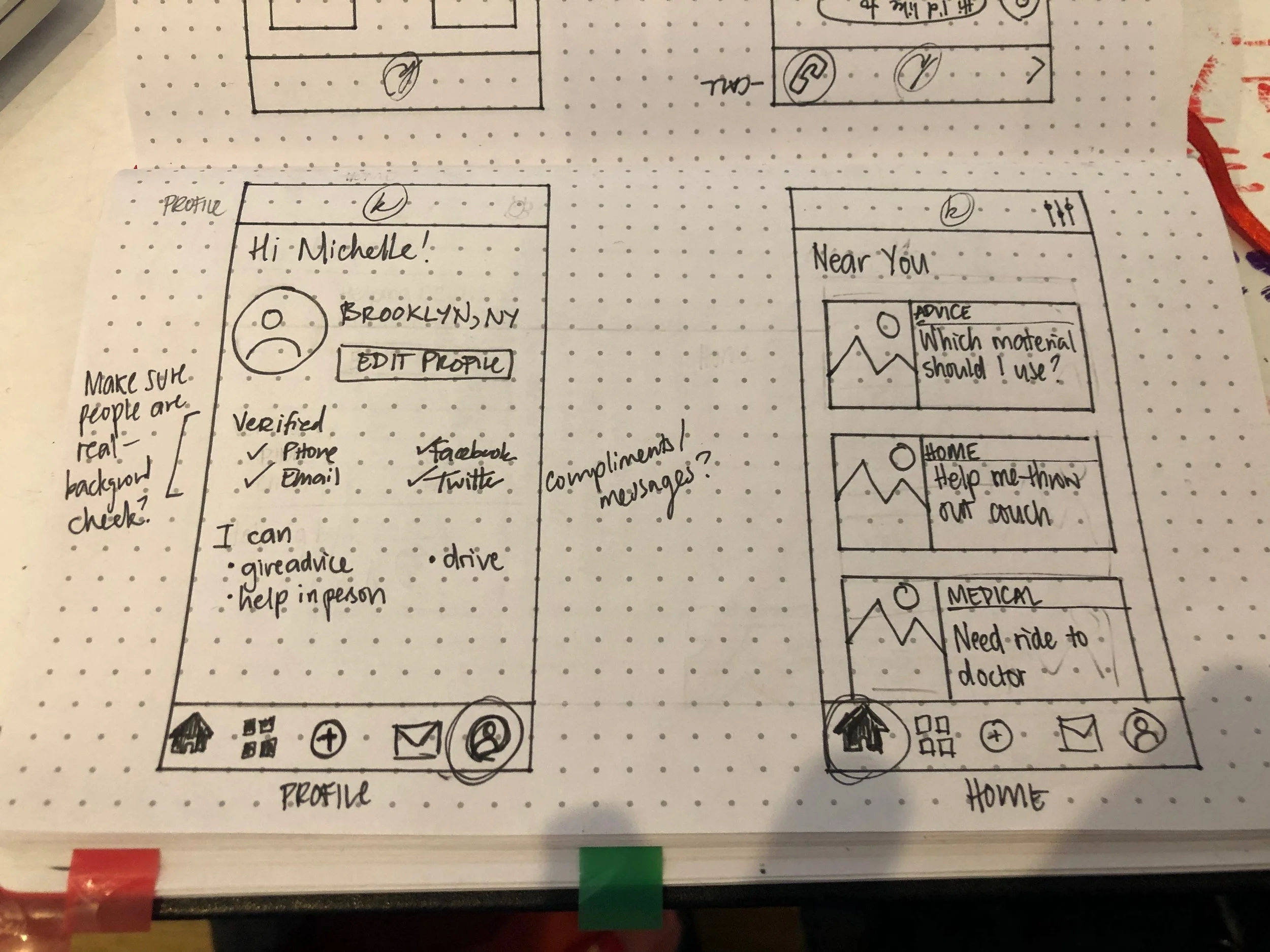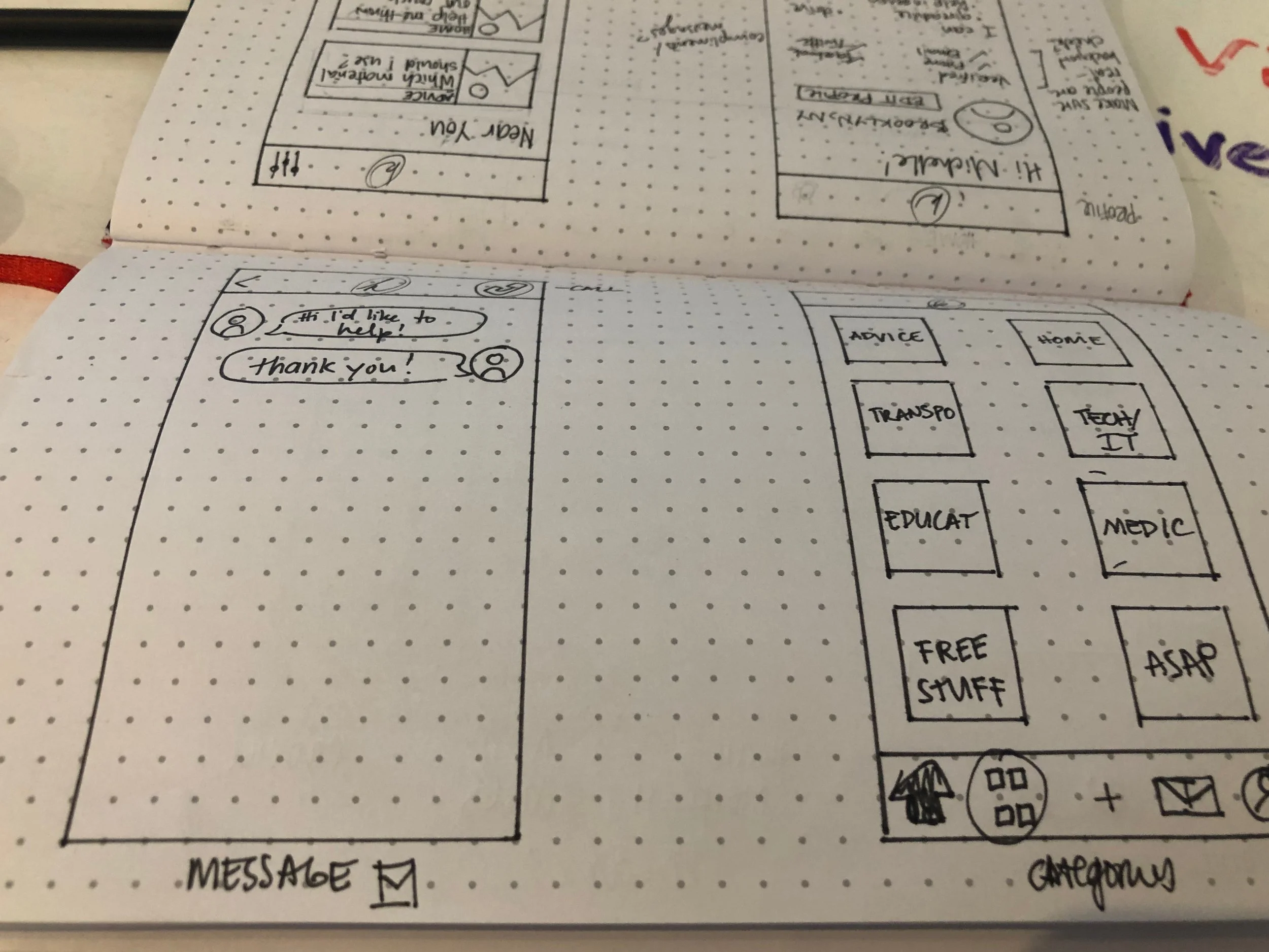Brief
Over the winter holidays, I worked on an iOS app concept on the theme of kindness. Working independently over the course of a week, I came up with Kindnest, a mobile app that encourages city dwellers to do kind acts for each other.
RESPONSIBILITIES
Comparative & Competitive Research, User Interviews, Persona, User Flows, Mid to High-Fidelity Wireframing, Basic Prototyping, Usability Testing
TOOLS
Photoshop, Sketch, InVision, Maze, Otter Voice Memos
TIMELINE
10 Days
Defining Kindnes(t)
I arrived at the idea for Kindnest by brainstorming definitions of kindness with a couple of friends during the holidays. We came up with two possible app ideas on the theme of kindness that would potentially benefit New Yorkers:
An app that allows restaurants to donate their leftover or unused food
Every day, many food establishments generate tons of food waste by disposing of excess food. This product would connect individuals to cafés and restaurants about to throw away food.Similar to: Goodr, Re-Plate, Rescuing Leftover Cuisine, Seamless
An app that enables residents to donate skills or services to someone in their local community (Selected)
This app would encourage city dwellers to help neighbors in need by donating their time and/or abilities. The voluntary services that can be provided can be simple, such as moving furniture, or more professional skills, such as one-time pro bono tutoring or nursing services.Similar to: Catchafire, Care.com, Fiverr, TaskRabbit
Hypothesis
Designing a platform that matches willing individuals with neighbors in need will encourage city dwellers to be kinder to one another.
User Research
To better understand how “kindness” is defined within the context of local neighborhoods.
Methodology
Interviewed five people in personal network who lived in a major city (New York, Boston)
Four out of five interviewees were aged 25–35, one was over 50 years old
Interviews lasted 8–15 minutes and were recorded & transcribed using the Otter Voice Notes app
Interviews gauged individuals’ experiences with giving and receiving acts of kindness.
Sample Questions include:
How would you define “kindness”?
How do you show kindness to your family? Your friends? Your peers? Your neighbors?
Tell me about the last time someone you don’t know was kind to you.
Tell me about the last time you were kind to someone you know. Why did you do it?
Tell me about the last time you were kind to someone you don’t know. Why did you do it?
Tell me about a time when kindness was difficult for you. Why was that?
When was the last time you needed help with something? How did you get help? What happened as a result?
Synthesis
I used a technique called affinity mapping to discover themes and insights from the raw interview data, such as:
I show kindness by being present for others.
I empathize with people in need.
I think kindness is easier when it’s mutually shared and I feel safe.
I generally don’t trust people I don’t know.
The Neighbor In Need
Michelle Reyes, 26
Michelle is a queer Afro-Latina who works full-time at an upscale restaurant. She unwinds by cooking dinner, drinking wine, and watching Netflix while knitting hats for her friends. But she doesn’t have the energy for much else. She’s frustrated by most people, but she has a loving heart and feels spiritual fulfillment in showing kindness to others.
Michelle is moving to a new apartment in a different neighborhood. She needs help moving stuff to her new bedroom, but she can’t afford to pay movers and her friends are available to help.
“I will go above and beyond for someone I care about...”
How might we…
…help New Yorkers like Michelle find trustworthy people who can help her move for free?
…empower Michelle to feel safe about asking for help? To feel safe about helping others?
…encourage Michelle to return the favor as a returning user?
Paper Sketches
01 Profile page and Home feed. Profile page shows different types of verification to minimize fraudulent users. The app’s home page is a feed of neighbors asking for help.
User Flows (Best Case)
Prototype
I designed wireframes using Sketch then created a clickable prototype with mid-to-high fidelity screens and interactions using InVision.
Feel free to click around the mobile prototype on InVision!
Usability Testing
I tested the prototype on six users remotely using a usability analytics tool called Maze. I assigned participants five tasks and defined an ideal path for each task. The tasks are as follows:
Create an account
Add a new request
Get help from a neighbor
Close a request after it’s been fulfilled
Return the favor
The amount of feedback I could receive during usability testing was minimal, due to the method I chose as well as the limited options available to free Maze accounts. Some of the feedback I received included:
"It was very easy to use"
"Easily navigable, intuitive set up."
"Looks good! Functions well!"
Usability Testing Success Rates. Though all tasks had “100% success,” Tasks 3–4 yielded high rates of user error.
Future Considerations
The Discover tab was a half-baked idea. Should we replace it with something else, or scrap it altogether?
Which factors contributed to errors in tasks 3–4? How might we reduce user errors in the future?
How might we incentivize New Yorkers to actually use this app, especially when people can provide services on Fiverr and TaskRabbit for money?
How might location and culture impact the success of community-building apps? Would an app like KindNest work in a place like New York, or might it be more effective in areas with a more community-oriented mindset?
“...but if I don’t know you? Ha! F*ck that, you gon’ help yourself.”
